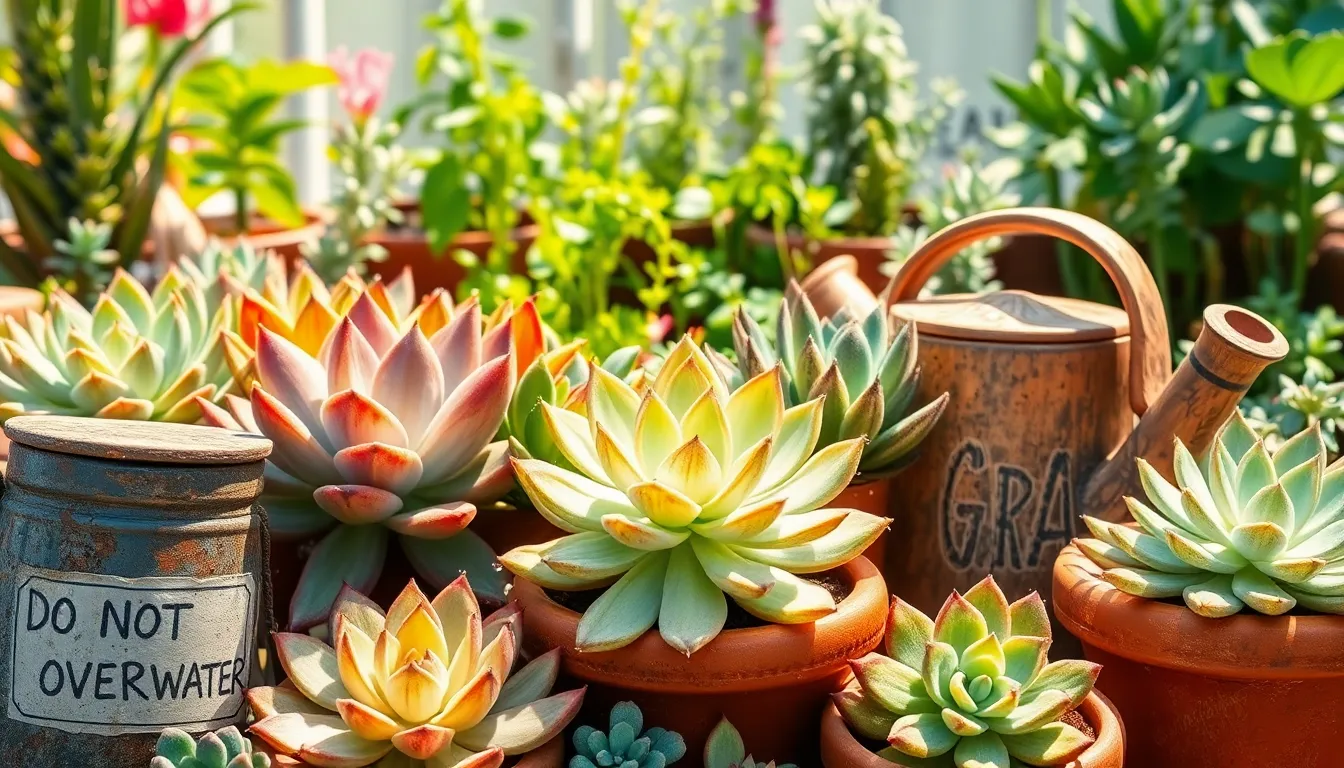Watering your plants might seem like the simplest task in your gardening routine, but it is truly an art that requires more finesse than one might expect. Whether you’re just beginning your gardening journey or have years of soil under your nails, understanding the nuances of watering can be the difference between a thriving oasis and a wilting wilderness. Proper watering is the lifeblood of your garden, influencing not only plant health but also the vibrancy and productivity of your greenery.
Gardening enthusiasts of all levels have been tripped up by common watering mistakes that can lead to over-saturated roots or parched leaves. In this article, we’ll delve into the most frequent pitfalls gardeners encounter and equip you with the knowledge to sidestep them with confidence. You’ll discover insights into how to gauge your plants’ water needs, the best times to water, and tips for ensuring that every drop counts.
With this guide, you’ll transform your approach to watering from guesswork into a precise practice, allowing your garden to flourish in ways you never thought possible. From recognizing the subtle signs of water stress to mastering the art of drought resistance, you’ll learn valuable skills that make gardening both a science and an art. Together, let’s unlock the secrets to nurturing your plants with just the right amount of care, ensuring that your garden becomes a testament to your growing expertise.
Overwatering and Soggy Soil

Many gardeners unknowingly overwater their plants, leading to soggy soil and root problems. It’s important to understand that different plants have varying water needs, and getting familiar with these requirements can save your garden from water-related stress.
First, check the moisture level of the soil before adding more water. You can do this by inserting your finger into the soil up to the first knuckle; if it feels damp, your plant is likely sufficiently hydrated.
To prevent overwatering, choose a pot with drainage holes and use a well-draining soil mix. A mix containing equal parts of peat moss, perlite, and pine bark is ideal for most houseplants, ensuring excess water can escape easily.
Moreover, consider the environment in which your plants live. For instance, plants in cooler, shaded areas may need less water than those exposed to full sun and wind.
Advanced gardeners can use moisture meters to monitor soil hydration levels more accurately. This tool can help you tailor your watering routine, ensuring each plant gets just the right amount of water it needs.
Remember, the goal is to keep the soil consistently moist but not waterlogged. By adjusting your watering habits and monitoring soil conditions, you’ll promote healthier root systems and more vigorous plant growth.
Underwatering and Wilting Leaves
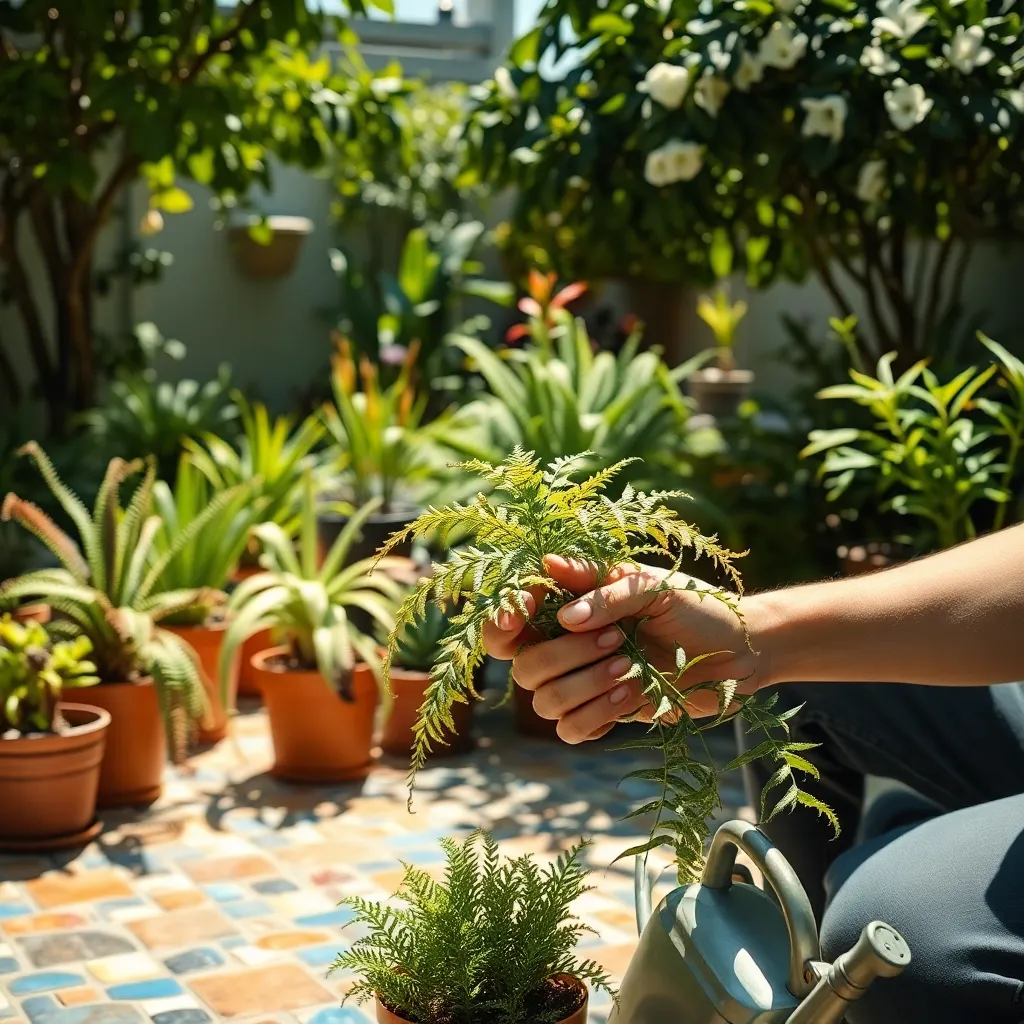
Underwatering is a common issue that can lead to wilting leaves, often causing gardeners to panic. Identifying underwatering is crucial, as it allows you to address the problem quickly before the plant suffers irreversible damage.
To determine if underwatering is the culprit, check the soil’s moisture level by sticking your finger about an inch deep into the soil. If it feels dry at this depth, it’s a sign that your plant needs water.
Watering deeply and less frequently is generally more effective than shallow, frequent watering. This approach encourages roots to grow deeper into the soil, making plants more drought-resistant over time.
Ensure your plants are in the right type of soil, as different plants have different needs; for instance, succulents thrive in well-draining soil, while tropical plants prefer more moisture-retentive options. If you’re unsure, a quick check on your plant’s specific requirements will help you create the ideal growing environment.
For those looking to refine their skills, consider using a moisture meter to provide a more precise assessment of when to water. These devices can be especially helpful for larger gardens or when caring for a diverse range of plants.
Inconsistent Watering Schedules
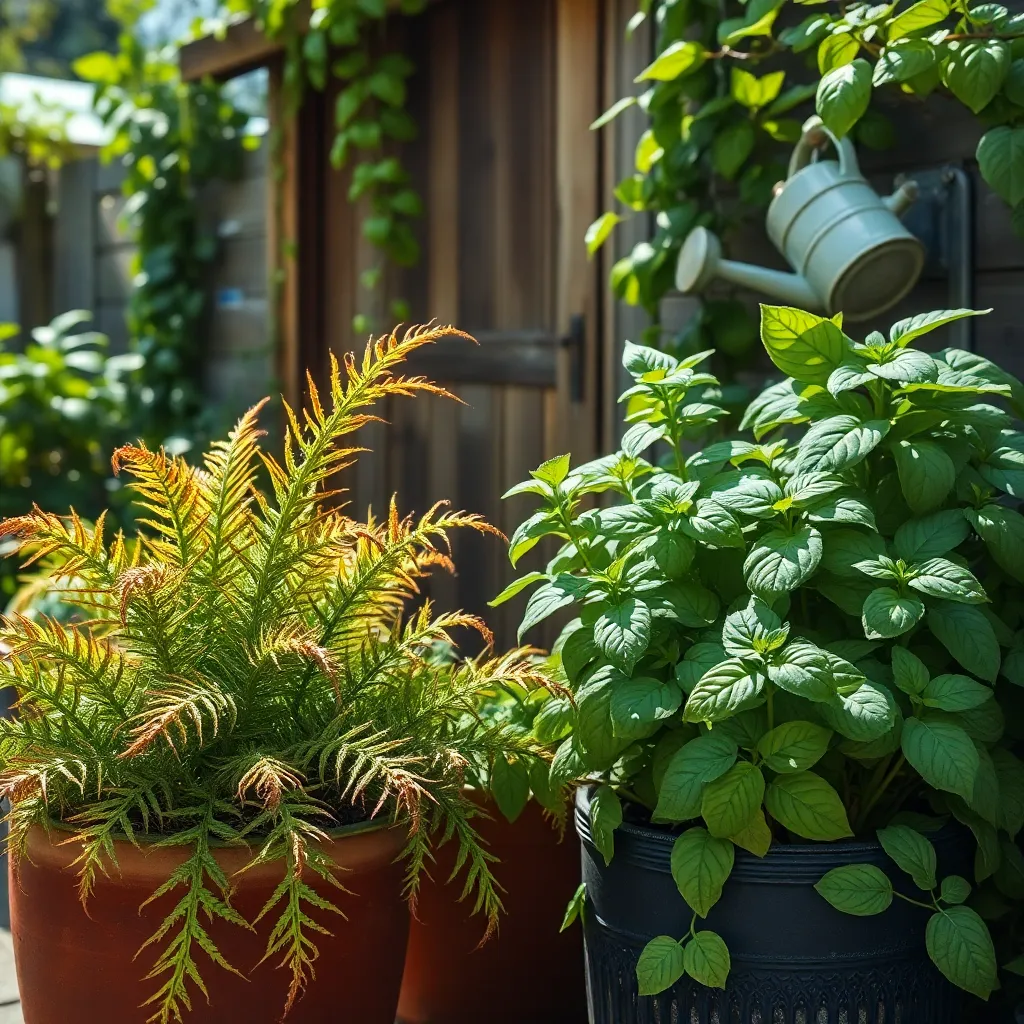
Many gardeners struggle with inconsistent watering schedules, which can lead to stressed and unhealthy plants. It’s crucial to establish a regular watering routine that suits the specific needs of your plants and environmental conditions.
To create a consistent schedule, first consider the type of plants you are growing and their water requirements. For example, succulents need watering only once the soil is completely dry, while tropical plants thrive with more frequent moisture.
One effective strategy is to check soil moisture regularly by inserting your finger about an inch into the soil. If it feels dry, it’s time to water; if it’s still moist, wait a day or two before checking again.
Using a moisture meter can be particularly helpful for those who find it difficult to judge soil moisture levels by touch. For advanced gardeners, consider setting up an automated irrigation system to deliver the right amount of water consistently.
Poor Drainage Causing Root Issues
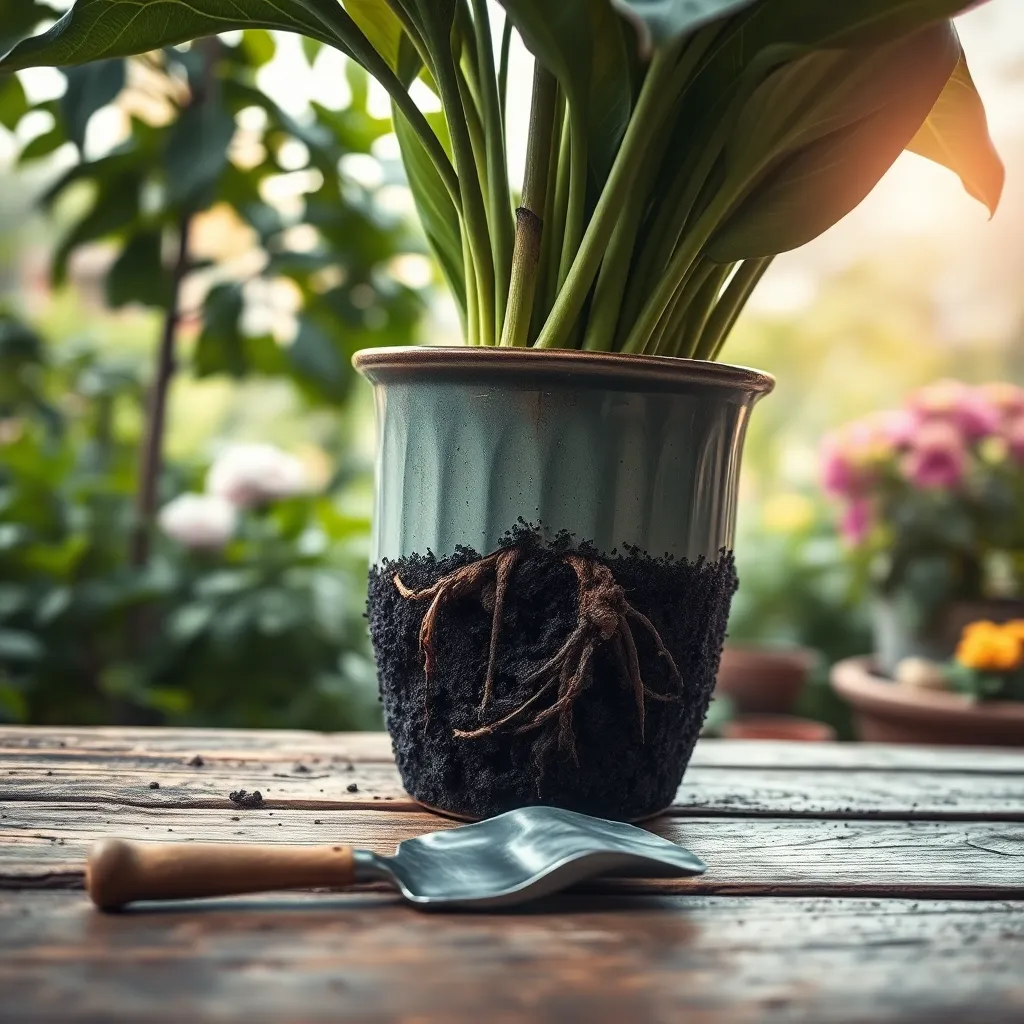
Poor drainage is a common culprit behind root issues in plants, often leading to root rot and stunted growth. Ensuring your soil has the right texture and composition can significantly improve drainage, allowing roots to breathe and thrive.
A simple way to test your garden’s drainage is by digging a hole about 12 inches deep and filling it with water. If the water doesn’t drain within 30 minutes to an hour, it indicates poor drainage, and you may need to amend your soil.
Amend the soil by mixing in materials such as coarse sand, perlite, or organic matter like compost, which can enhance drainage and aeration. Elevated beds can also be a great solution for areas with persistently poor drainage, as they allow excess water to flow away from plant roots.
For potted plants, use containers with drainage holes and a well-draining potting mix to prevent waterlogging. Repotting your plants with fresh soil every couple of years can also help maintain optimal soil conditions and prevent root issues.
Ignoring Seasonal Water Needs
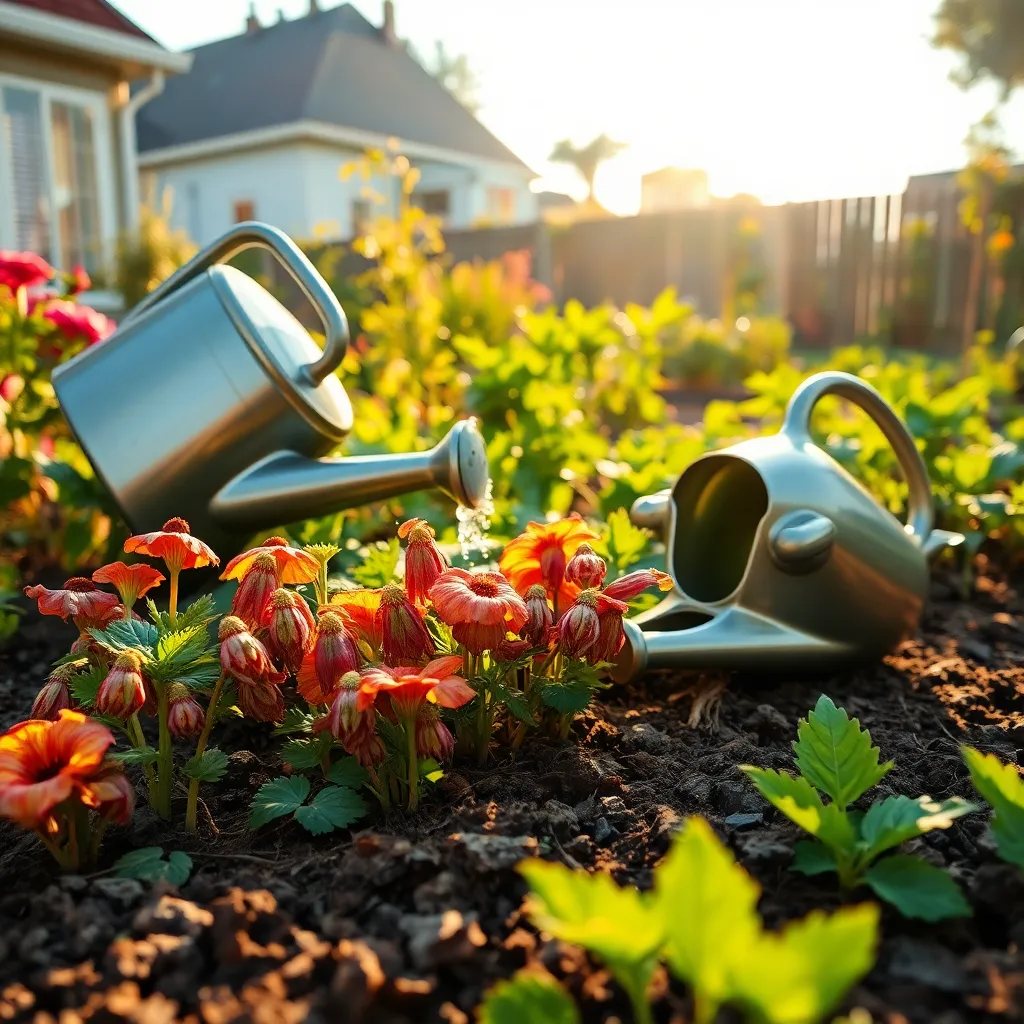
Understanding the seasonal water needs of your plants is crucial to their health. Many gardeners overlook the fact that water requirements change with the seasons, which can lead to overwatering or underwatering.
During the growing season, plants typically need more water to support new growth. Conversely, in the dormant months, reducing the frequency of watering can prevent root rot and other issues caused by excess moisture.
It’s important to observe your plants and adjust watering schedules based on their specific needs and environmental conditions. For instance, if you live in a region with dry winters, consider watering evergreens occasionally to prevent desiccation.
Advanced gardeners might use soil moisture meters to precisely monitor the water levels in their garden beds. Alternatively, a simple finger test—pushing your finger into the soil to check moisture—can be a practical method for beginners. Ensure that the soil is appropriately draining to avoid waterlogged conditions, especially in clay-rich soils.
Conclusion: Growing Success with These Plants
In nurturing any relationship, much like caring for plants, it’s crucial to avoid common pitfalls. First, overwatering can smother growth; similarly, overwhelming a partner with constant communication can stifle connection. Second, neglecting regular maintenance, such as failing to check in with your partner, can lead to emotional drought. Third, inconsistent attention can cause misunderstandings, just as irregular watering leads to wilting. Fourth, ignoring the unique needs of your relationship parallels using a one-size-fits-all approach to different plants. Lastly, not adjusting to seasonal changes mirrors the failure to adapt to life’s evolving circumstances.
To fortify your relationship, take a moment today to discuss with your partner how you both can better meet each other’s needs. This simple conversation can lead to profound growth. For continued guidance and support, bookmark this article now as a valuable resource to revisit whenever you feel your relationship needs a little extra care.
Remember, tending to the garden of your relationship with patience and understanding today paves the way for a flourishing partnership tomorrow. Your path to relationship success is just a conversation away—nurture it well.

